Research firm IDC released smartphone shipment estimates for the second quarter of 2013 late Thursday, with Apple seeing its second-lowest year-to-year growth in almost four years, while the overall market accelerated.
According to the IDC's Worldwide Quarterly Mobile Phone Tracker, smartphone shipments grew 52.3 percent year-over-year in the June quarter, hitting 237.9 million units compared to 156.2 million units in 2012.
The amount of growth experienced by the worldwide smartphone market was the highest annual rate for the sector in five quarters. Sequentially, quarterly shipments were up 10 percent from the 216.3 million units shipped in the first quarter of the year.
"The smartphone market is still a rising tide that's lifting many ships," said Senior Research Analyst Kevin Restivo in a prepared statement. "Though Samsung and Apple are the dominant players, the market is as fragmented as ever. There is ample opportunity for smartphone vendors with differentiated offerings."
Samsung retained a dominant lead in the second quarter, capturing 30.4 percent of the market on shipments of 72.4 million handsets. Apple came in second with 31.2 million iPhones shipped, good enough for a 13.1 percent market share.
Despite owning a combined 43.5 percent of the worldwide market, the two companies' year-over-year growth rates trailed the market average and were the lowest out of this quarter's top-five vendors.
IDC speculates that Apple's slowdown can be attributed to customers holding out for a new iPhone model this fall. The company's growth is expected to accelerate if a rumored low-cost version is also launched later this year.
Coming in third was LG, which shipped 12.1 million units to take 5.1 percent of the market, up 108.6 percent from the same period in 2012. Lenovo, which showed the most growth with a 130.6 percent year-to-year jump, managed 11.6 million units for a 4.7 market share. Finally, ZTE rounded out the top five with 4.2 percent of the market on 10.1 million units shipped, up 57.8 percent from the year previous.
As for overall mobile phone shipments, Apple held onto its third place position behind Samsung and Nokia. Adding feature phones to the mix, Samsung ended up with 113.4 million shipped units and 26.2 percent of the market for the quarter ending in June, up 16.3 percent year-to-year. Nokia dropped 27.1 percent from the second quarter of 2012, shipping 61.1 million units for a 14.1 percent market share.
Coming in fourth behind Apple was LG with 16.2 million units for 3.7 percent of the market, up 23.7 percent from last year, while ZTE's shipments declined 1.1 percent to 15 million units for a 3.5 percent share of the market.
In all, mobile phone shipments hit 432.1 million during the second quarter, up 6 percent year-to-year.
 AppleInsider Staff
AppleInsider Staff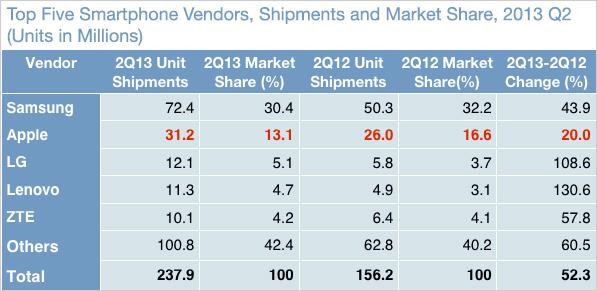
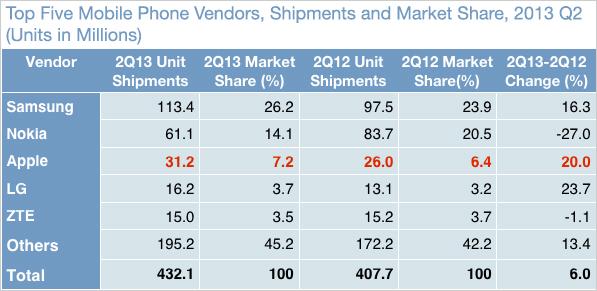

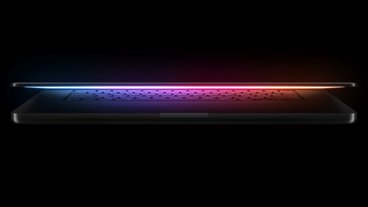


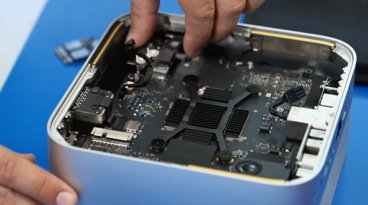









 Christine McKee
Christine McKee
 Charles Martin
Charles Martin

 Oliver Haslam
Oliver Haslam
 William Gallagher
William Gallagher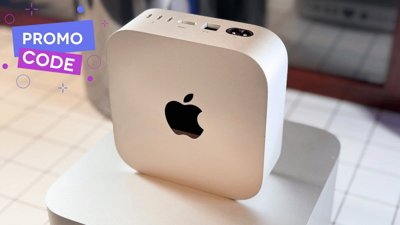

 Sponsored Content
Sponsored Content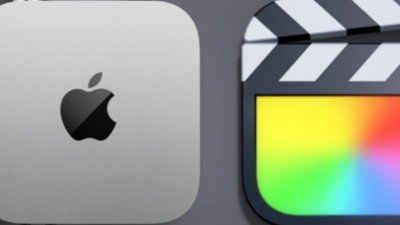


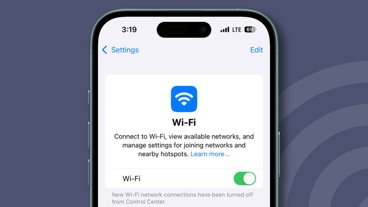






16 Comments
It's time to start talking about phone share instead of smartphone share. It's starting to make little sense to isolate smartphones. http://www.idc.com/getdoc.jsp?containerId=prUS24239313
It's time to start talking about phone share instead of smartphone share. It's starting to make little sense to isolate smartphones.
http://www.idc.com/getdoc.jsp?containerId=prUS24239313
What? Why? With feature phones going the way of the dodo, who cares what their share is seeing how every year it accounts for less and less of the overall pie?
On a side note, I feel bad for HTC not even making it to the top 5. Heck, they couldn't even beat Lenovo for Pete's sake. I really wanted to like the One, as it's so well put together compared to most plasticy Android phones, but that gimmicky camera just ruined it for me. Unless it's a phone marketed and priced for 'tweens, "Good enough for Facebook" just isn't good enough.
This is the revers of info being reported via BBC-World business on actual Smartphones. With the Korean company falling short and losing in saturated market with extended price-drop on shares.
What qualifies a phone to be called a smart phone. Are there any minimum specifications it has to meet?
What qualifies a phone to be called a smart phone. Are there any minimum specifications it has to meet?
The Wikipedia article is a good guide. There's no minimum specification as (a) specifications are constantly changing and (b) it's a marketing term.